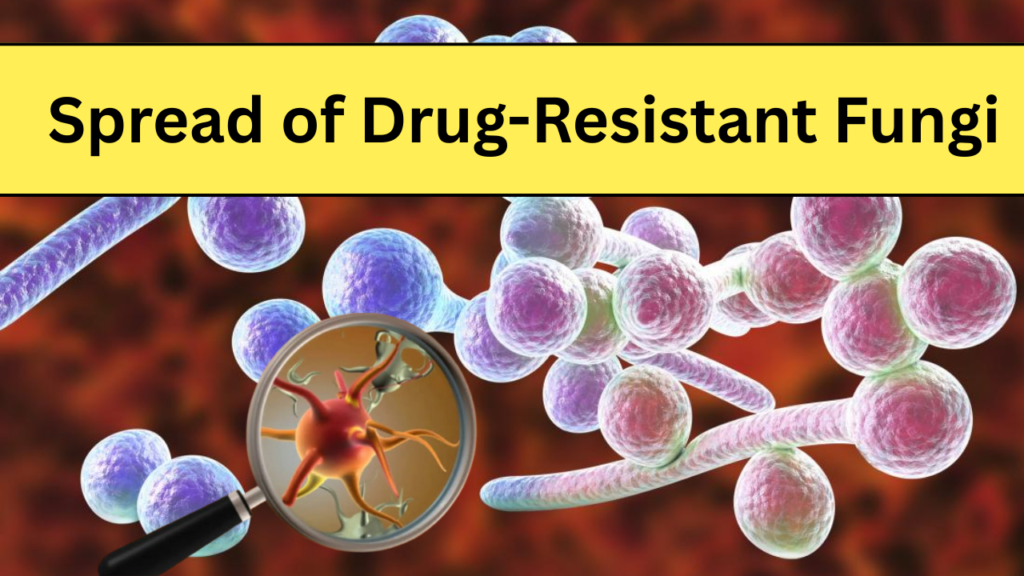As climate change continues to reshape our environment, scientists are raising alarms about a lesser-known but growing threat: the spread of drug-resistant fungi. These microscopic organisms, once confined to specific geographic regions, are now expanding due to rising global temperatures. Worse yet, many have developed resistance to existing antifungal treatments, making them harder—and sometimes impossible—to treat.

This new reality presents a double danger. First, the fungi are thriving in places they previously couldn’t survive. Second, they’re evolving faster than our medicines can keep up. This article breaks down the science, impact, and what you can do to protect yourself and your community.
Quick Summary
- Climate change is expanding the reach of dangerous fungi like Aspergillus fumigatus and Candida auris into new areas.
- Studies show a 77.5% increase in the spread of A. fumigatus in Europe alone by 2100.
- Drug resistance is rising due to overuse of fungicides in farming and medicine.
- Fungal infections are often overlooked but can be deadly, especially in people with weak immune systems.
- Experts urge more funding for fungal research, better diagnostics, and global monitoring systems.
- Learn more from the official CDC page on Climate Change and Fungal Diseases.
Understanding the Threat: What Are Drug-Resistant Fungi?
Fungi are a normal part of our environment. They’re everywhere—in soil, air, plants, even on our skin. Most fungi are harmless. However, a few species can cause infections, especially in people who are sick, have weakened immune systems, or are in hospitals.
The real danger begins when these fungi stop responding to medication, becoming what scientists call “antifungal-resistant.” Just like how some bacteria have become resistant to antibiotics, fungi are now evolving defenses against the drugs used to kill them.
Examples of Dangerous Drug-Resistant Fungi:
- Aspergillus fumigatus – A common mold that can cause lung infections. Its drug-resistant strain has become harder to treat.
- Candida auris – A yeast responsible for severe infections in hospitals. It’s resistant to multiple antifungal drugs and spreads easily.
- Rhodosporidiobolus fluvialis – A newly discovered pathogen in humans that is both deadly and resistant to treatment.
How Is Climate Change Making It Worse?
Climate change is doing more than just raising sea levels and increasing wildfires. It’s also creating the perfect conditions for fungi to survive and spread. Here’s how:
Warmer Temperatures Help Fungi Thrive
Many fungi couldn’t previously survive at human body temperatures (around 37°C or 98.6°F). But as global temperatures rise, fungi are adapting. They’re becoming heat-tolerant, which means they can now infect warm-blooded animals—including humans.
Expanding into New Regions
In 2023, researchers projected that Aspergillus fumigatus could expand its territory by 77.5% in Europe by the year 2100. That’s 9 million more people potentially exposed to a dangerous fungal infection.
What Makes Fungi Drug-Resistant?
There are two main drivers:
1. Overuse of Fungicides in Agriculture
Farmers use chemicals called triazoles to prevent mold from ruining crops. But these same chemicals are also used in medicine. Constant exposure to these chemicals in the environment helps fungi develop resistance faster.
2. Medical Misuse
Just like antibiotics, overprescribing antifungals or using them improperly allows fungi to “learn” how to survive them. Once they adapt, these “super fungi” spread quickly, especially in hospitals.
Who Is Most at Risk?
While anyone can technically be infected, certain people are much more vulnerable:
- Hospital patients (especially those with central lines or breathing tubes)
- People with weakened immune systems
- Organ transplant recipients
- Diabetics
- Cancer patients undergoing chemotherapy
These groups face higher risk because their bodies can’t fight off infections as effectively.
Global Hotspots: Where Are These Fungi Emerging?
Fungi are spreading fastest in regions that are warming the quickest. Reports show increased fungal activity in:
- Europe
- South Asia
- The United States
- Sub-Saharan Africa
In the U.S., Candida auris has been detected in over 30 states, and outbreaks in hospitals have led to life-threatening complications.
How Can We Stop the Spread?
This isn’t a problem we can solve overnight, but there are actionable steps we can take:
1. Invest in Research
Fungal diseases are underfunded. According to the World Health Organization, there are far fewer treatment options for fungal infections compared to bacterial or viral diseases. More funding can lead to better diagnostics and new medications.
2. Improve Hospital Sanitation
Hospitals need to enforce strict infection control protocols, especially in ICUs and transplant wards. This includes regular screening and isolating infected patients.
3. Regulate Agricultural Fungicide Use
We must balance crop protection with human health. Encouraging organic farming or using biological pest controls can help reduce environmental exposure to resistant fungi.
4. Public Awareness and Hygiene
Basic hygiene like handwashing, using personal protective equipment (PPE) in hospitals, and keeping wounds clean can lower the risk of infection.
Overall Summary
While climate change and drug resistance are global issues on their own, their combination in the form of drug-resistant fungi presents a unique, growing threat. The spread is already underway, and without urgent action—from researchers, policymakers, healthcare workers, and individuals—the impact could be devastating.
Fungi don’t need to be scary. But they do demand respect. As the world gets warmer, we need to stay one step ahead of this silent, microscopic enemy.
FAQs About Drug-Resistant Fungi
What is a drug-resistant fungus?
It’s a type of fungus that has evolved to survive treatments that would normally kill it. This makes infections harder to treat and more dangerous.
Can healthy people get infected?
Yes, but it’s much less common. Most infections occur in people with weakened immune systems or those in hospital environments.
Is there a vaccine for fungal infections?
As of now, no vaccines exist for fungal diseases, though research is ongoing.
How does climate change cause this?
Rising temperatures allow fungi to adapt to human body heat, enabling them to infect humans more easily. It also expands their geographic range.
What are the symptoms of a fungal infection?
It varies but can include:
- Fever
- Cough
- Breathing problems
- Skin rashes
- Fatigue
If symptoms persist or worsen, seek medical attention immediately.









No Comments Yet
Be the first to share your thoughts.
Leave a Comment